Our planet groans under the weight of mounting waste. Plastic islands choke our oceans, landfills overflow, and precious resources dwindle. Amidst this environmental crisis, a beacon of hope emerges: recycling. But what is the best way to recycle waste materials?
The best way to recycle waste materials involves implementing a comprehensive approach that prioritizes the principles of reduce, reuse, and recycle. Optimal recycling begins with source reduction and minimizing the generation of waste at its origin.
This article delves deep into the world of recycling, unveiling the best practices to transform you into a waste-wielding warrior. We’ll explore the hierarchy of waste management, identify the champions of recyclability, and equip you with the knowledge to conquer waste with confidence.
The Importance of Responsible Waste Management
![[NEW] F-TGH-140 AI What is the best way to recycle waste materials Multi-colored trash bins with designated labels.](https://thegoodhuman.com/wp-content/uploads/2024/03/waste-management.jpg)
In an era marked by escalating environmental concerns, the importance of responsible waste management cannot be overstated. The staggering volume of waste generated globally poses a severe threat to ecosystems, biodiversity, and overall planetary health.
The repercussions of irresponsible waste disposal are evident in the pollution of land, water bodies, and the atmosphere, leading to dire consequences for human and wildlife populations. The urgency to address these challenges has propelled responsible waste management to the forefront of sustainable practices, necessitating a shift in how societies produce, consume, and dispose of materials.
Beyond environmental conservation, responsible waste management plays a pivotal role in safeguarding public health. Improper disposal practices contribute to the spread of diseases, contaminate water supplies, and pose significant risks to communities.
By adopting efficient waste management strategies, communities can mitigate health hazards, reduce the strain on natural resources, and contribute to the creation of a cleaner, healthier, zero-waste living environment for present and future generations.
Recognizing waste not as a burden but as a valuable resource waiting to be managed responsibly is essential in fostering a global mindset that prioritizes sustainability.
Understanding Waste Categories
When it comes to waste management, it’s essential to understand the different categories of waste. By categorizing waste effectively, you can ensure proper handling and disposal methods are implemented to protect people and the environment from potential harm.
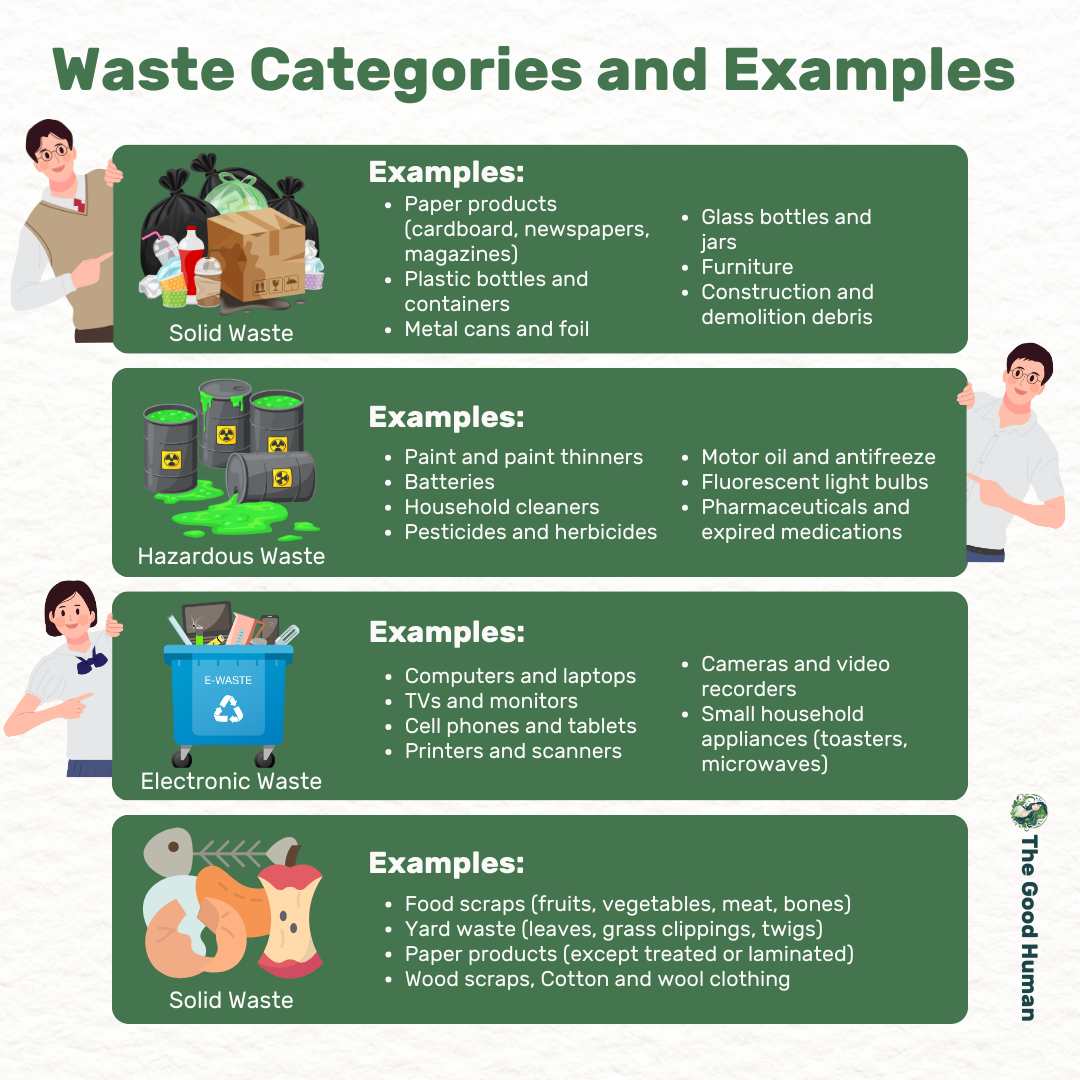
Solid Waste
Solid waste refers to any non-liquid, non-gaseous material discarded as unwanted or no longer needed. This category encompasses a broad array of materials generated by human activities, including but not limited to household garbage, industrial byproducts, construction debris, and commercial waste.
Solid waste can take various forms, such as paper, plastics, metals, glass, organic matter, and more. The management and disposal of solid waste present significant environmental challenges, as improper handling can lead to pollution, habitat destruction, and adverse effects on human health.
Recognizing the diverse nature of solid waste and implementing effective waste management practices are crucial steps toward minimizing the ecological impact and promoting a more sustainable approach to resource utilization.
Hazardous Waste
Hazardous waste refers to materials that pose a substantial threat to human health, the environment, or both due to their inherent toxic, flammable, corrosive, or reactive nature. These substances can come from various sources, including industrial processes, manufacturing, healthcare facilities, and households.
Examples of hazardous waste include chemicals, solvents, heavy metals, pesticides, and electronic waste. Proper disposal and management of hazardous waste are of paramount importance to prevent contamination, soil and water pollution, and adverse health effects.
Governments and regulatory bodies often have stringent guidelines and protocols in place to regulate the generation, transportation, and disposal of hazardous waste to minimize the potential risks associated with these materials.
Electronic Waste (E-Waste)
Electronic waste, commonly known as e-waste, refers to discarded electronic devices and equipment that have reached the end of their useful life or are no longer in use. This category encompasses a wide range of items, including computers, smartphones, televisions, refrigerators, and other electronic appliances.
E-waste contains both valuable materials, such as metals and plastics, and hazardous substances, including lead, mercury, and brominated flame retardants.
The rapid pace of technological advancements contributes to the growing volume of e-waste globally. Improper disposal of electronic waste poses significant environmental and health risks, as the hazardous components can contaminate soil, water, and air.
Biodegradable Waste
Biodegradable waste refers to organic materials that can naturally decompose into simpler, environmentally benign substances through the action of microorganisms, such as bacteria and fungi. This category includes organic matter like kitchen scraps, food waste, yard trimmings, and other plant or animal-based materials.
Unlike non-biodegradable waste, which persists in the environment for extended periods, biodegradable waste undergoes a natural degradation process that contributes to nutrient-rich soil formation.
Proper management of biodegradable waste involves practices like composting, wherein these materials are allowed to break down in a controlled environment, transforming them into nutrient-rich compost that can be used to enhance soil fertility.
The Three Rs: Reduce, Reuse, Recycle
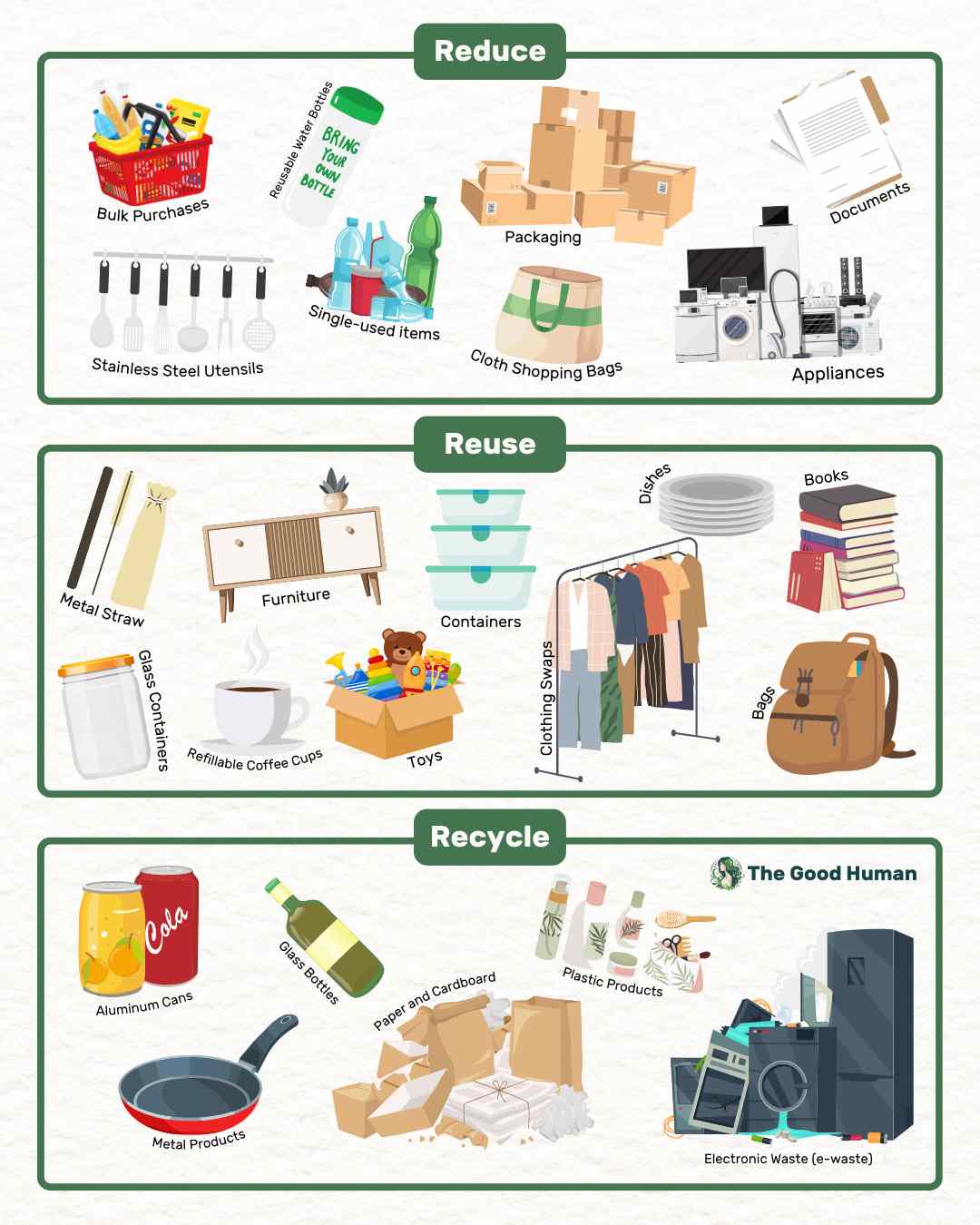
In the fight against mounting waste and its detrimental impact on our environment, the three Rs – Reduce, Reuse, Recycle – serve as a powerful framework for responsible waste management. This hierarchy prioritizes strategies, emphasizing the importance of minimizing waste generation in the first place.
Reduce: This principle stands at the top of the hierarchy, advocating for consuming less overall. This can involve conscious purchasing habits, opting for durable and reusable items over disposables, and minimizing food waste through careful planning and responsible consumption.
Reuse: Extending the lifespan of existing items is another crucial step. This can involve repairing broken items, finding creative new uses for old objects, or participating in donation or swapping programs. By giving items a second life, we conserve resources and reduce the burden on landfills.
Recycle: While often seen as the primary solution, recycling comes last in the hierarchy. It involves processing used materials into new products, minimizing the need for virgin resources. However, it’s important to remember that recycling isn’t always straightforward and may have its environmental costs.
By prioritizing reduction and reuse, we can significantly decrease the amount of waste requiring recycling. This hierarchical approach ensures we are not simply shifting the burden but actively working towards a more sustainable future for our planet.
The Best Ways to Recycle Different Materials
When it comes to recycling different materials, there are specific ways to ensure you’re doing it correctly.
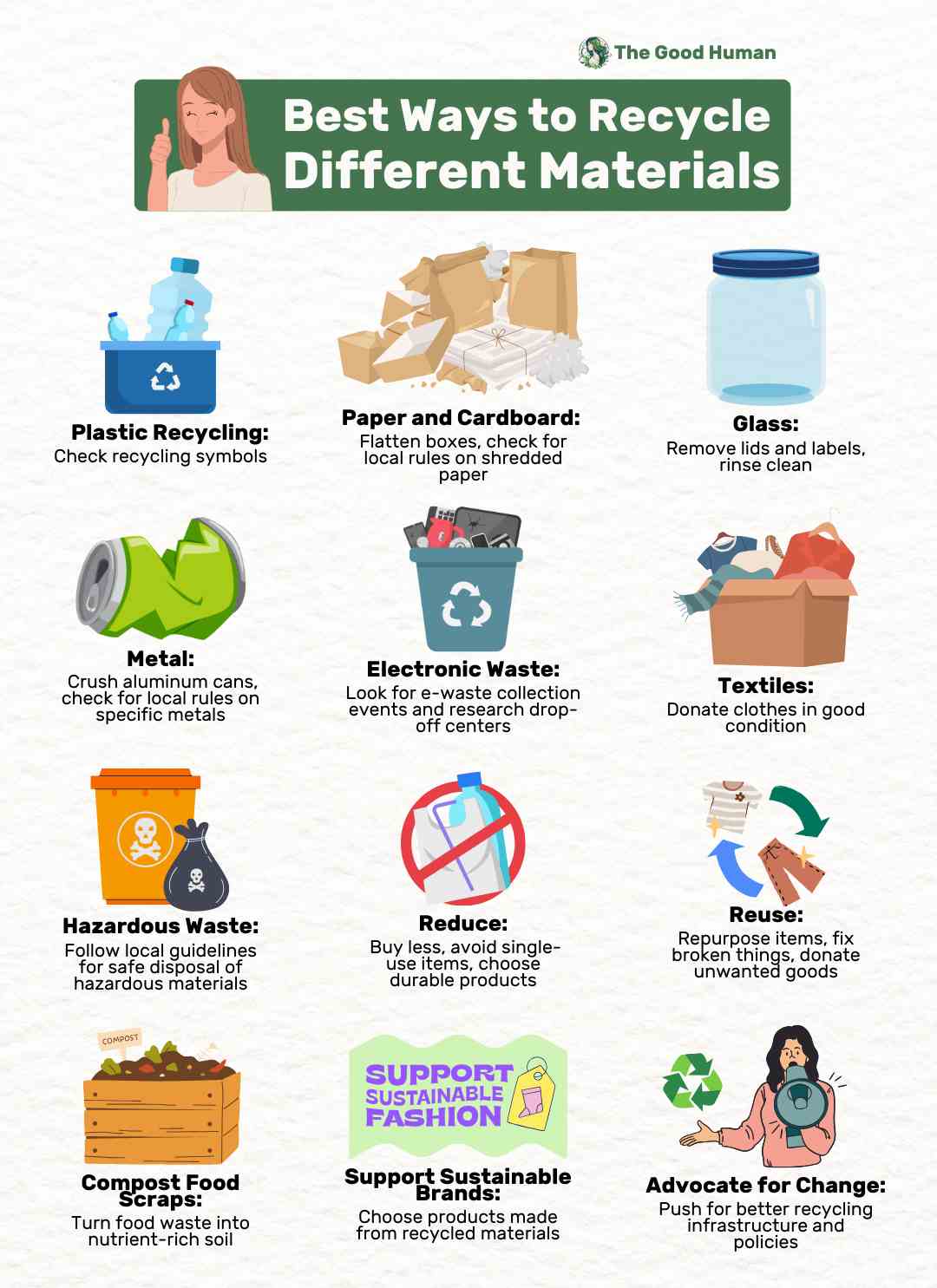
1. Paper and Cardboard: Flatten boxes, check rules on shredded paper
Make sure to flatten your cardboard boxes and check the local rules for shredded paper before recycling them.
When it comes to waste reduction, proper disposal of paper and cardboard is crucial. Recycling guidelines vary by location, so it’s important to know what is accepted in your area.
Cardboard recycling tips include breaking down boxes to save space and make transportation easier for recycling facilities.
Paper waste management involves separating different types of paper and ensuring they are clean and dry before recycling.
2. Plastic Recycling: Check recycling symbols
Ensuring you check the recycling symbols on plastic items is essential for proper disposal and environmental impact. By decoding these symbols, you can determine if the plastic is recyclable, what type of plastic it is, and how to dispose of it correctly.
Plastic pollution has a significant global impact, so making informed decisions about recycling is crucial. Look into local recycling facilities and options to recycle your plastics properly. Consider using plastic alternatives or eco-friendly options to reduce your overall plastic consumption.
Additionally, stay updated on recycling innovations and future technologies that may offer more sustainable solutions for handling plastic waste.
Recycling codes, often displayed as a triangular symbol with a number inside, identify the type of plastic used in an item. This information helps sorting facilities recycle plastic material properly.
Here’s a table outlining the standard recycling codes and their meanings:
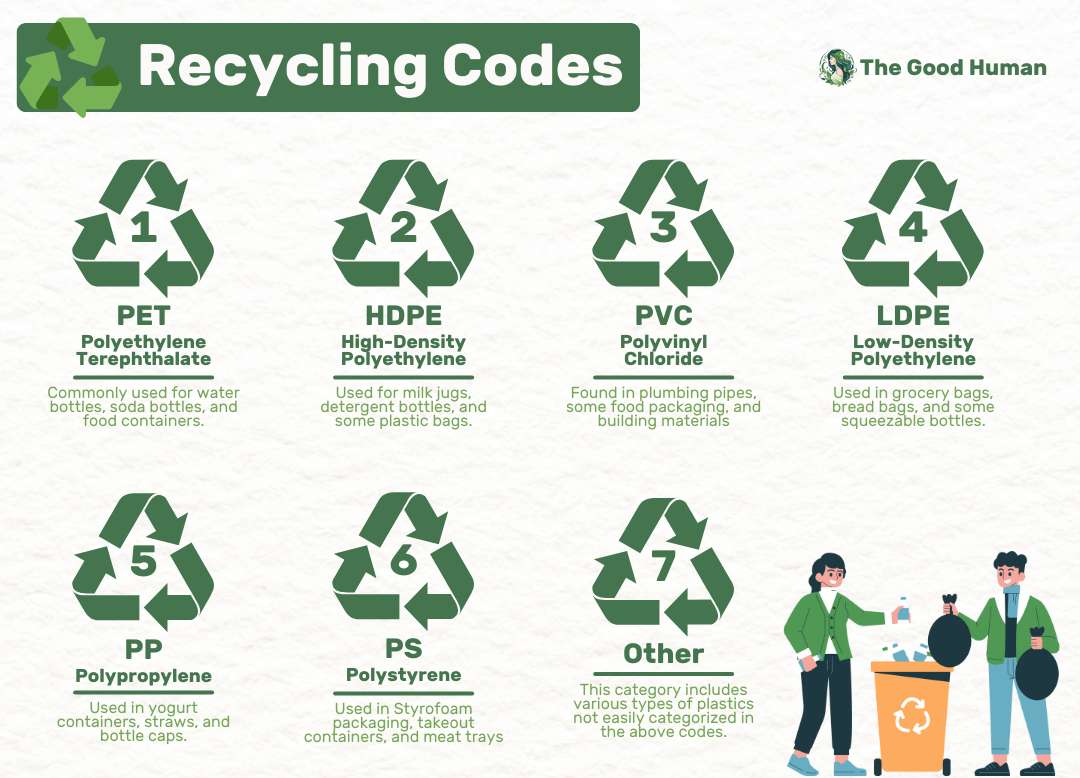
3. Glass: Remove lids and labels, rinse clean
Glass is a versatile material that can be recycled endlessly without losing its quality, making it an excellent choice for sustainability.
When recycling glass, remember to remove lids and labels and rinse them clean to ensure they can be processed appropriately.
Glass recycling comes with its own set of benefits and challenges. While it conserves energy and reduces landfill waste, challenges like contamination and transportation costs can hinder the process. However, innovative methods such as using recycled glass in construction materials or creating new glass products offer sustainable solutions.
Consider creative upcycling ideas or explore the future of glass recycling technology to contribute to a greener tomorrow.
4. Metal: Crush aluminum cans, check local rules on specific metals

Crushing aluminum cans before recycling can help you save space and make the process more efficient. When you crush aluminum cans, you reduce their volume by up to 80%, allowing you to store more in your recycling bin.
This not only saves space but also makes it easier for recycling facilities to handle and process the cans. Aluminum recycling has numerous benefits, including conserving energy, reducing greenhouse gas emissions, and minimizing waste sent to landfills.
Additionally, recycling metal scrap contributes to the economy by providing raw materials for new products. To ensure compliance with local regulations and optimize your recycling efforts, check with your municipality for specific rules on metal recycling in your area.
5. Electronic Waste: Look for e-waste collection events or drop-off centers
When looking for e-waste collection events, you can also research drop-off centers in your area to dispose of electronic devices responsibly. Proper e-waste disposal is crucial for the environment, as electronic devices contain hazardous materials that can pollute soil and water if not recycled correctly.
Electronic recycling methods ensure that valuable resources are recovered and reused, reducing the need for new raw materials.
Remember to wipe personal data from your devices before recycling them to safeguard your information.
6. Textiles: Donate clothes in good condition
Consider donating your gently used clothes to help someone in need and give your wardrobe a fresh start. Clothing donations play a crucial role in supporting textile recycling initiatives, reducing waste, and promoting sustainable fashion practices.
Instead of throwing away old garments, consider dropping them off at second-hand stores or participating in upcycling projects to give them new life. By donating your clothes, you not only declutter your closet but also contribute to a more environmentally friendly way of handling textiles.
Your donation can make a significant impact on someone else’s life while promoting a circular economy where resources are reused efficiently. So next time you clean out your closet, think about the positive impact your clothing donations can have on people and the planet.
7. Hazardous Waste: Follow local guidelines for safe disposal
Ensuring proper disposal of hazardous materials like batteries and paint is crucial to protect our environment and community.
Proper disposal of batteries involves recycling them at designated drop-off locations or participating in battery recycling programs.
Paint disposal should follow local guidelines to prevent contamination of soil and water sources.
Hazardous materials, if not disposed of correctly, can pose serious health risks and harm the ecosystem.
It’s important to educate yourself on the proper methods for disposing of these items to minimize their negative impact.
8. Reduce: Buy less, avoid single-use items, choose durable products
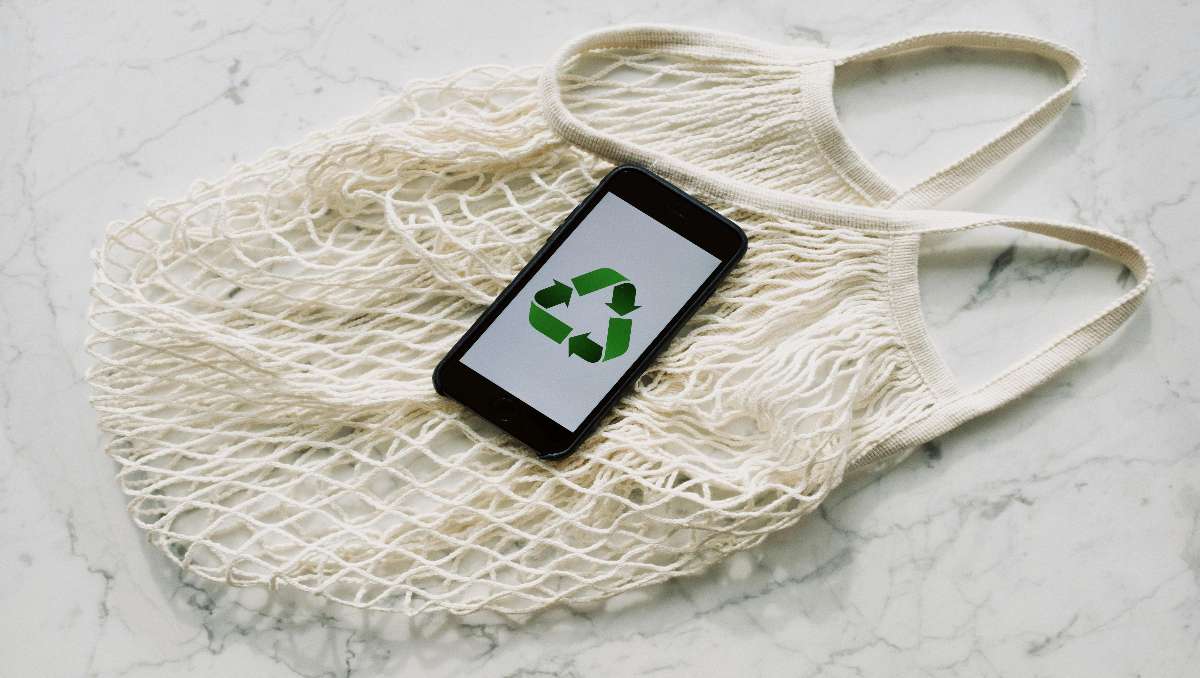
To reduce your environmental impact, opt for long-lasting items instead of disposable ones. Consider your buying habits and choose products that are designed to be used multiple times rather than single-use items that end up in the trash after one use.
By investing in durable products, you can significantly decrease the amount of waste you generate over time. Look for items made from high-quality materials that are built to last, even if they may cost a bit more upfront.
This shift in purchasing behavior not only benefits the environment by reducing waste but also saves you money in the long run as you won’t need to replace disposable items constantly.
Make a conscious effort to prioritize waste reduction through your consumer choices and make a positive impact on the planet.
9. Reuse: Repurpose items, fix broken things, donate unwanted goods
Opting for reusable items can help reduce the amount of waste we produce, so instead of throwing away broken things, consider repairing them or repurposing them for a new use.
For example, you can repurpose furniture by giving it a fresh coat of paint or transforming it into something entirely different. Instead of tossing out old clothes, donate them to a charity or someone in need. When appliances break down, try fixing them before replacing them with new ones.
Upcycle containers by using them for storage or as planters for your garden. Reuse packaging materials like boxes and bubble wrap for shipping or storing items instead of discarding them after one use.
10. Compost Food Scraps: Turn food waste into nutrient-rich soil

Millions of tons of food waste end up in landfills each year, generating harmful methane gas and taking up valuable space. Composting offers a powerful solution, transforming food scraps into nutrient-rich soil amendments. This not only diverts waste but also benefits your garden or local community gardens by enriching the soil and improving soil structure.
Compost helps retain moisture and improves drainage, creating a more hospitable environment for plant roots. By utilizing compost, you can minimize your dependence on potentially harmful synthetic fertilizers, promoting a more sustainable gardening approach.
Composting is surprisingly simple and can be done in various ways, from backyard bins to countertop options.
11. Support Sustainable Brands: Choose products made from recycled materials
The choices we make as consumers have a significant impact on the environment. By supporting sustainable brands that prioritize recycled materials in their products, we can collectively send a powerful message and drive positive change.
Choosing products made from recycled materials helps conserve natural resources like trees, water, and minerals, minimizing our environmental footprint. Production processes using recycled materials typically require less energy compared to virgin materials, contributing to a reduction in greenhouse gas emissions.
Look for brands that transparently communicate their commitment to sustainability and utilize recycled materials in their products.
12. Advocate for Change: Push for better recycling policies
Individual actions are crucial, but systemic change is also essential to address the growing waste crisis. We can all play a role in advocating for improved recycling infrastructure and policies.
Raise awareness about the importance of recycling and encourage others to participate in responsible waste management practices. Voice your support for policies that promote recycling, such as expanded recycling programs, mandatory composting initiatives, and extended producer responsibility schemes.
Contribute to or volunteer with organizations actively working on developing innovative solutions and advocating for improved waste management systems. By raising our voices and advocating for change, we can push for stronger policies and infrastructure that make it easier for everyone to recycle effectively.
Community-Based Recycling Programs
Community-based recycling programs offer a hands-on approach to reducing waste and promoting sustainability in local neighborhoods. These initiatives encourage community engagement by providing convenient drop-off locations for recyclable materials such as paper, plastic, glass, and metal.
By participating in these programs, individuals can directly contribute to waste reduction efforts and minimize the environmental impact of improper disposal. Through community-based recycling programs, residents have the opportunity to learn about the importance of resource conservation and sustainable practices.
Many programs also offer educational workshops and events to raise awareness about the benefits of recycling and inspire more people to get involved. By actively participating in these initiatives, you’re not only helping to protect the environment but also fostering a sense of belonging within your community.
Working together towards a common goal of reducing waste and promoting sustainability can strengthen relationships among neighbors and create a more environmentally conscious neighborhood.
Joining a community-based recycling program is a simple yet impactful way to make a difference in your local area while connecting with like-minded individuals who share your commitment to environmental stewardship.
Challenges and Solutions in Recycling
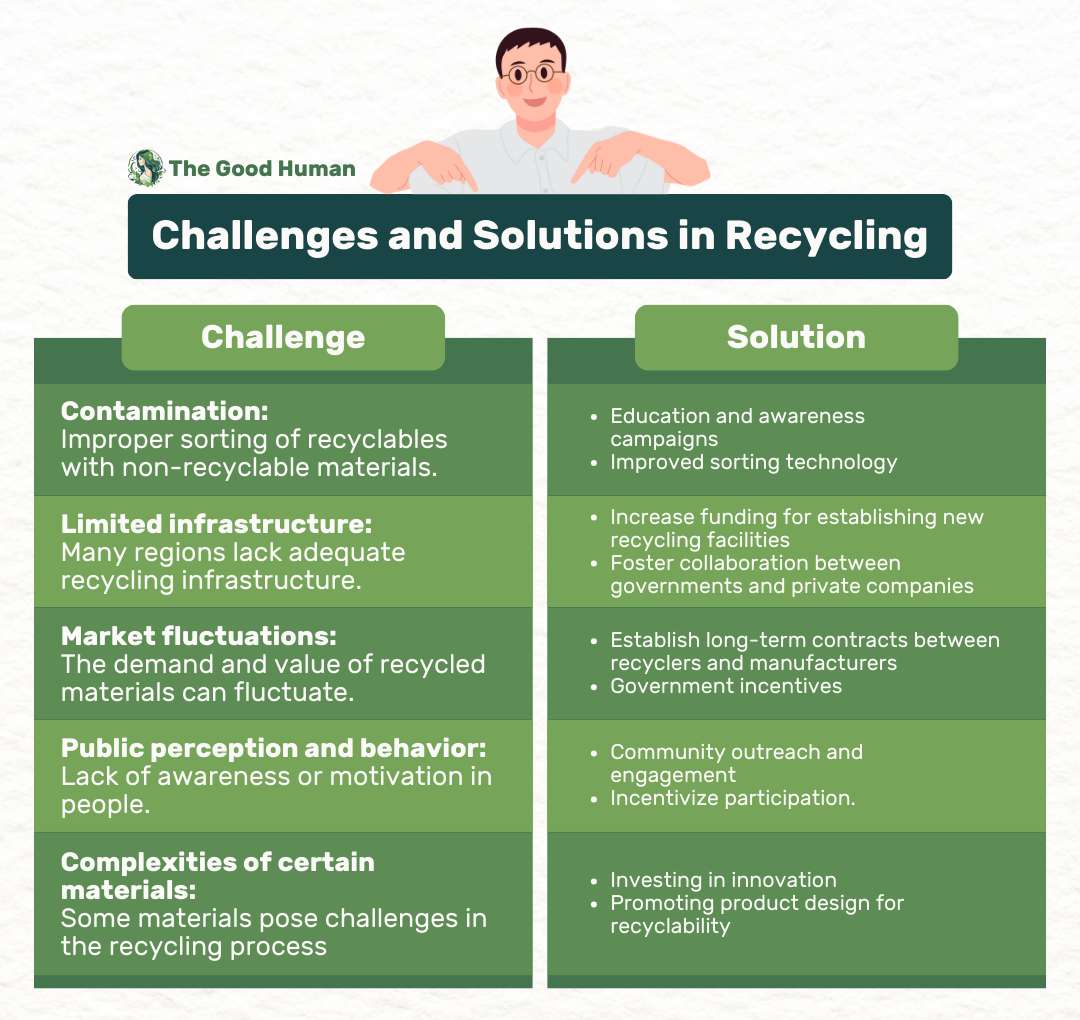
One interesting statistic reveals that only 9% of plastic waste has been recycled globally. This alarming number highlights the challenges faced in recycling and the urgent need for sustainable solutions.
However, there are innovative recycling technologies and practices that can help overcome these obstacles. Recycling innovations such as advanced sorting systems and chemical recycling processes are being developed to increase the efficiency of waste reduction. These technologies have the potential to improve recycling rates and reduce environmental impact significantly.
Furthermore, implementing green practices like promoting reusable packaging and encouraging consumers to recycle properly can also make a significant difference. Education on the importance of recycling and proper waste management is key to achieving higher recycling rates.
By investing in recycling technology, promoting waste reduction initiatives, and adopting sustainable practices, we can work towards a more circular economy where materials are reused efficiently. Communities must come together and embrace these solutions to ensure a cleaner, greener future for generations to come.
Recycling in the Circular Economy
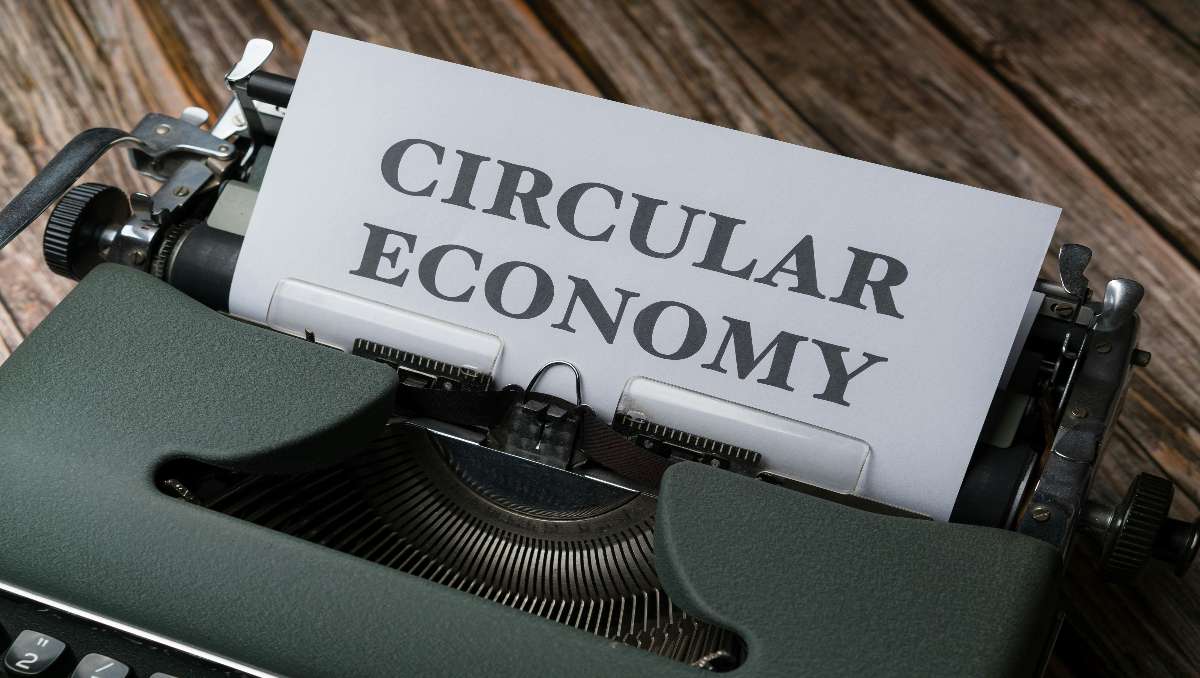
Embracing a circular economy mindset involves rethinking how we use resources and emphasizing the importance of sustainability in all aspects of production and consumption. This shift towards a more sustainable model focuses on resource recovery, waste reduction, and minimizing environmental impact.
In the context of recycling, the circular economy approach encourages sustainable practices like designing products for longevity, repairability, and recyclability. By creating products with these principles in mind, we can extend their lifespan and reduce the amount of waste generated.
Furthermore, implementing closed-loop systems where materials are continuously recycled back into production processes is key to achieving a circular economy. This not only reduces the need for new raw materials but also minimizes the environmental footprint of manufacturing.
By adopting these strategies and promoting a culture of reuse and recycling, we can work towards a more sustainable future where waste is seen as a valuable resource rather than a disposable byproduct. Together, we can make a significant impact on building a more environmentally conscious society.
Waste No More: Take Action for a Greener Tomorrow!
In conclusion, when it comes to recycling waste materials, the best way is to be mindful of our choices and actions.
By following the three Rs – reduce, reuse, recycle – we can make a positive impact on the environment.
It’s essential to participate in community-based recycling programs and support efforts toward a circular economy. Challenges may arise, but with determination and innovation, solutions can be found.
Let’s work together to create a sustainable future for generations to come!






